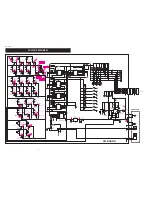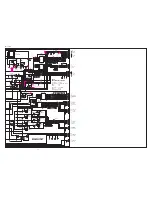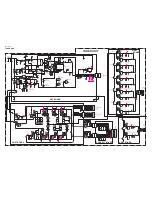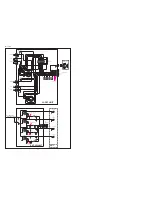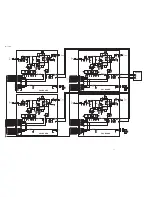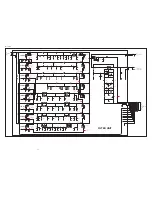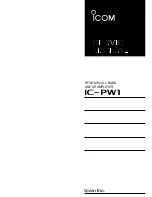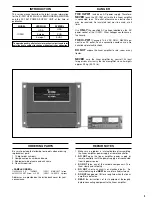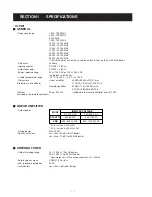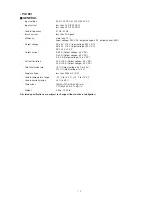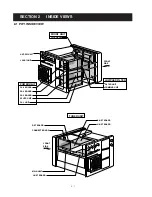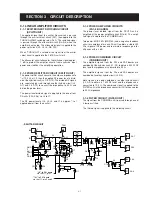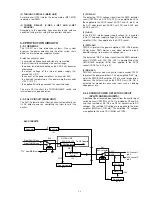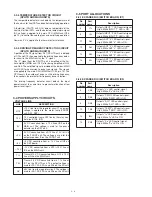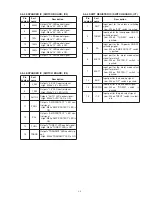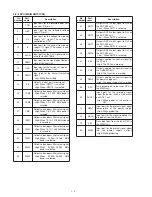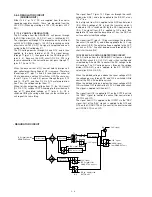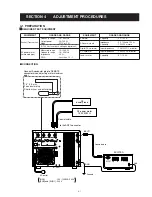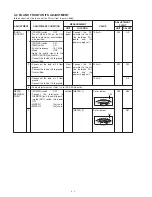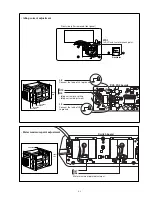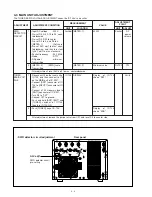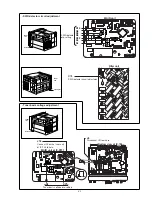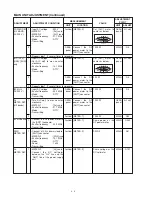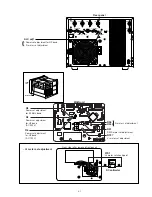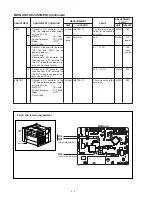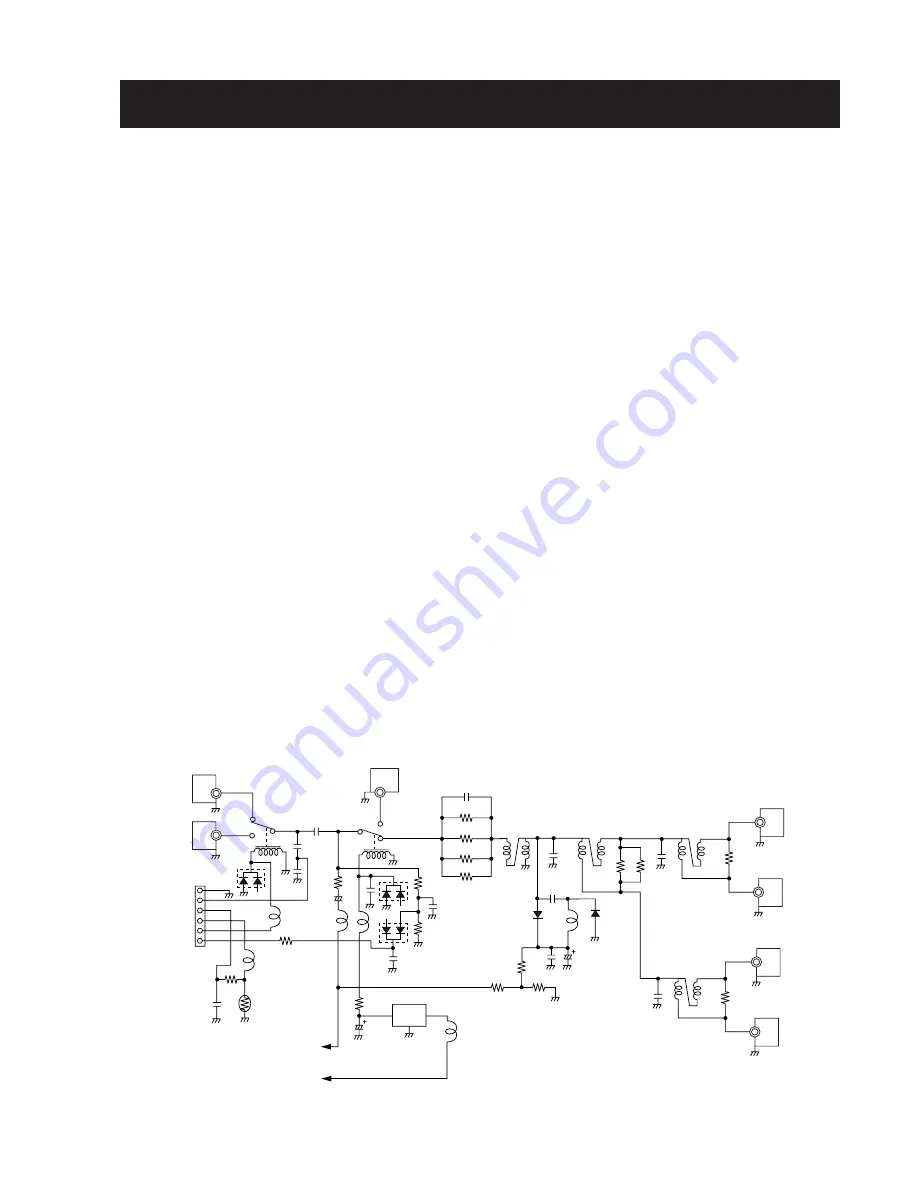
3-1 LINEAR AMPLIFIER CIRCUITS
3-1-1 EXCITER INPUT SWITCHING CIRCUIT
(SPLITR UNIT)
The applied signal from the exciter (transceiver) is passed
through the exciter select circuit (RL1) then applied to the
THROUGH/AMP switching relay (RL2). The switched signal
is passed through the attenuator circuit (R3–R6) when the
amplifier is activated. The attenuated signal is applied to the
power split circuit (L2–L4, L6, R9–R12).
When “THROUGH” is selected, the signal from the exciter
select circuit is applied to the FILTER unit via J8.
The attenuator circuit attenuates the switched signal approx.
1 dB to protect the amplifier circuits from excessive input
power and stabilizes the amplifying operation.
3-1-2 POWER SPLITTER CIRCUIT (SPLITR UNIT)
The power splitter circuit converts the antenna impedance to
1
⁄
4
(12.5
Ω
) at L2, then the applied RF power level is divid-
ed at the hybrid circuit (L3, R9, R10). The divided RF signals
are separately passed through another hybrid circuit (L4,
R11 and L6, R12) to convert the impedance to 50
Ω
and
divide the power level.
The power level divided signal is applied to the one of four
PA units (PA1–PA4) via J4 to J7.
The RF power level at J4, J5, J6 and J7 is approx.
1
⁄
5
of
applied power (from the exciter).
3-1-3 POWER AMPLIFIER CIRCUITS
(PA1–4 BOARDS)
The power level divided signal from the SPLITR unit is
amplified at the power amplifier circuit (Q1a/b). The ampli-
fied signal is applied to the COMBINR unit.
Two power MOS-FETs (MRF150) and a negative feedback
circuit are employed for each PA unit to obtain a stable 300
W or higher of RF power and to maintain response gain for
all bands within 3 dB.
3-1-4 POWER COMBINER CIRCUIT
(CONBINR UNIT)
The amplified signals from the PA1 and PA2 boards are
combined at the hybrid circuit (L1, R1) to obtain a 500 W RF
level and the impedance is converted to 25
Ω
.
The amplified signals from the PA3 and PA4 boards are
combined at another hybrid circuit (L2, R2).
Both signals are again combined at another hybrid circuit
(L3, R3) to obtain a 1 kW RF level and the impedance is
converted to 12.5
Ω
. The combined signal is applied to the
FILTER unit via the impedance convertor (L5) for conversion
to 50
Ω
impedance.
3-1-5 FILTER CIRCUIT (FILTER UNIT)
The signal from the CONBINR unit is passed through one of
8 low-pass filters.
The filtered signal is applied to the matching circuit.
SECTION 3 CIRCUIT DESCRIPTION
C26
R3
R4
R5
R6
"HV" to PA1 board
via the J11, pin 1
"T8V" to PA1 board
via the J11, pin 5 and 6
GND
F
5V
TEMP
IN
DRIV
J1
J2
RL1
C18
C19
D1
J9
L7
C2
R1
C4
L1 L8
C3
D3
D2
R7
C7
R8
R2
C5
L9
R17
C21
R16
R18
C22
IC1
L11
R14
R15
R13
C9
C10
D4
C8
L5
D5
L2
C17
L3
R9
R10
C11
L4
R11
J4
PA1
J5
PA2
J6
J7
PA3
PA4
R12
L6
C14
J8
IN1
IN2
TRU
• SPLITTER CIRCUIT
RL2
3 - 1
Summary of Contents for IC-PW1
Page 1: ...SERVICE MANUAL ADDENDUM CONTENTS PARTS LIST 1 BOARD LAYOUTS 16 VOLTAGE DIAGRAM 18 Mar 2011 ...
Page 24: ...SERVICE MANUAL ADDENDUM CONTENTS PARTS LIST 1 BOARD LAYOUTS 16 Jun 2010 ...
Page 42: ...SERVICE MANUAL ADDENDUM CONTENTS PARTS LIST 1 BOARD LAYOUTS 16 VOLTAGE DIAGRAM 18 Apr 2010 ...
Page 96: ...HF 50 MHz ALL BAND LINEAR AMPLIFIER iC PW1 ...
Page 175: ...MNF F1 EP2 TO REGRELAY BOARD MLF EP1 F2 TO REGRELAY BOARD EP35 I N FG 8 19 FIL AC BOARD 8 20 ...
Page 201: ...A 5449MZ S 3 1999 Icom Inc 1 1 32 Kamiminami Hirano ku Osaka 547 0003 Japan Count on us ...

